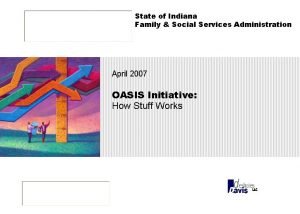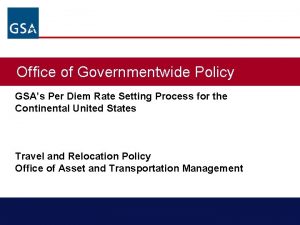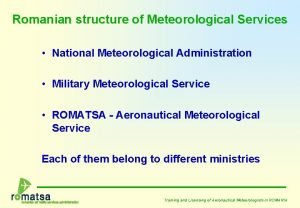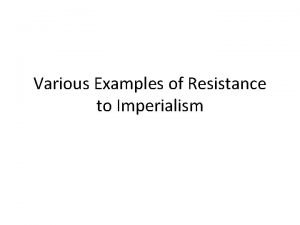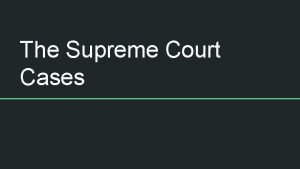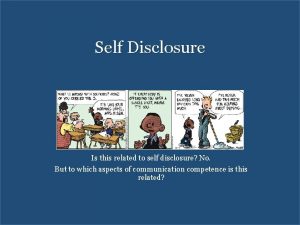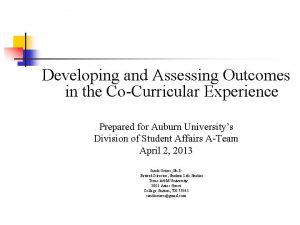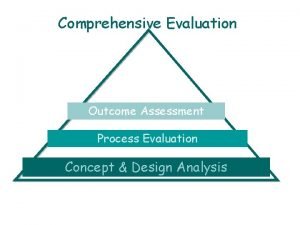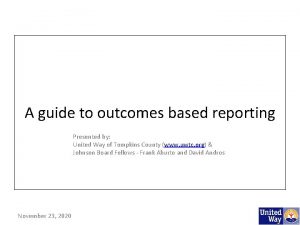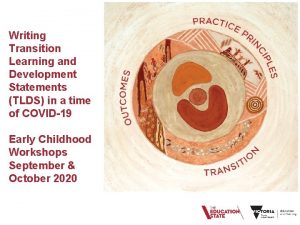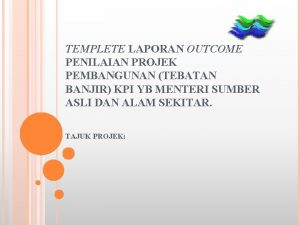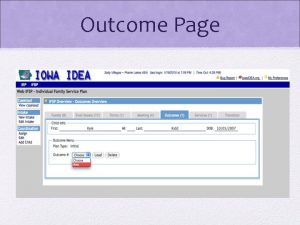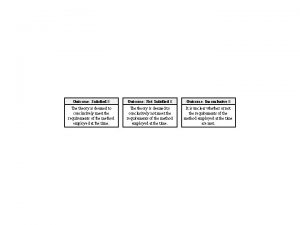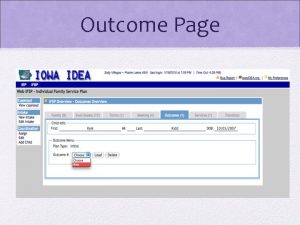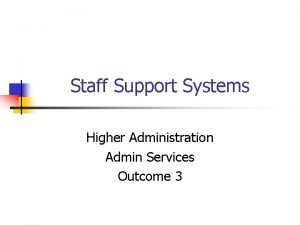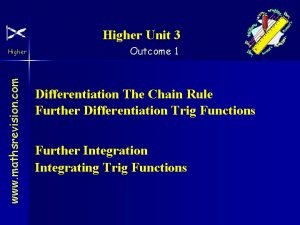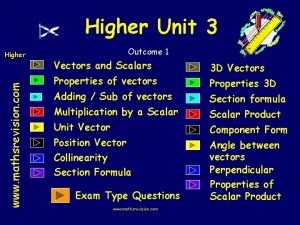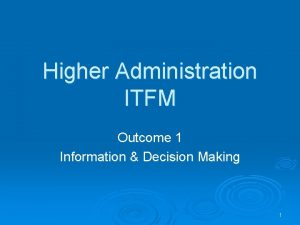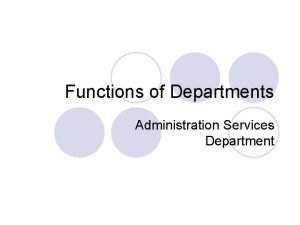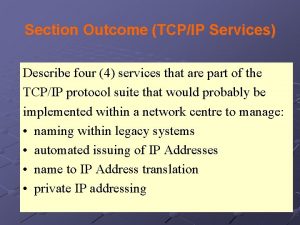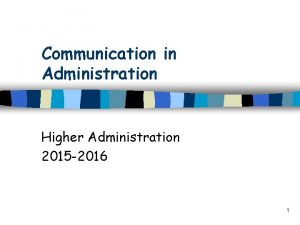Higher Administration IT Administration Services Outcome 1 2






































- Slides: 38

Higher Administration & IT Administration Services Outcome 1. 2 1

2 What is a Team? “No man island” A team can be defined as a group who have been specifically formed for a particular purpose. They have: A shared purpose or goals A sense of belonging (having an identity) A dependence/reliance on each other

3 Features of Effective Teams Team Composition – personality, interests, age experience and backgrounds Team Development – once values and goals are agreed the group pulls together Nature of the Task – clarity, belief in task, resources allocated Team Maintenance/Environment – includes virtual teams and team building opportunities Leadership – having an effective strong leader

4 Features of Effective Teams Positive communication between all team members with mutual respect, and support in a no-blame culture Clearly defined roles (Belbin). Suitable team size – 4 -6 people? The Pizza Rule? Ability to resolve conflict effectively. Length of time the team has been established

5 Class Question… Discuss some of the negative consequences of having too large a team and too small a team.

6 Suggested Solution… If a team working on a project is too large, there is a danger of a situation developing where sub-groups within the team start to form and break away and develop their own agenda. Also, less assertive members of the group may not be given the opportunity to speak up or participate in a larger team. If the team is too small to handle all of the specialist tasks required for a project, there is a danger of one person dominating the team or too few tasks or skills being shared among the group.

7 An Effective Team Member Motivational to others, providing suitable support Willingness to learn and develop – perhaps taking additional responsibilities of projects – open to learning new skills from others Ability to put personal disputes aside. Listen to others Organised | Hardworking | Creative Calm | Patient | Conciliatory | Enthusiastic

8 Team Roles (Belbin) The Specialist – rare knowledge and skills The Ideas Person – creative, imaginative, solves problems The Motivator – the drive and courage to overcome obstacles The Organiser – clarifies goals and makes decisions, delegates well The Implementer – turns ideas into actions The Checker – monitors and evaluates The Finisher – delivers on time The Go-Getter – develops contacts and explores opportunities The Team Player – listens to others and averts conflict

9 Stages in Team Development Forming – the team members are introduced Storming – members compete for roles; disputes and power struggles Norming – members start working together and conflicts are resolved Performing – the team is settled and working together

10 Internet Research Visit www. belbin. com to find out some more about effective teams.

11 Team Conflicting goals – two members of the team want to go in different directions Personal disputes – there always people who will not get on Lack of resources – not being able to put all ideas into action (money/staff/equipment) Changing expectations – moving deadlines or targets Loyalty issues – affected by the relationships between members of the team

12 Class Questions… “Often, groups will take more risks than individuals working alone”. Discuss this statement. “Two heads are better than one”. Justify this statement.

13 Possible Solutions… Groups will often take more risks than individuals working alone and can share the responsibility for the consequences. Calculated risks can often pay off and give an organisation an advantage over competitors. On the other hand, individuals working on their own may be less inclined to take risks, as they will be fully responsible for their actions.

14 Possible Solutions… Bring people together, who have a variety of knowledge, skills and experience, will generate more ideas and solve more problems than using individuals separately. The pooling of ideas and skills benefits an organisation in terms of creativity. It is also of benefit to the individuals concerned with regard to their personal learning and development. In other words, ‘Two heads are better than one. ’

15 Class Questions… Why will effective team work develop positive morale and motivation? Why will effective team work develop multiskilling? “Effective teams need less supervision”. Discuss this statement.

16 Possible Solutions… Effective teamwork can bring advantages to individuals by creating a greater sense of involvement, development and achievement. This can lead to improved job satisfaction, higher morale and motivation. These together can benefit an organisation through improved efficiency and productivity.

17 Possible Solutions… Effective team work can be demonstrated clearly when, in the absence of one member of the team, others can cover their duties among them, thereby maintaining aims and targets.

18 Possible Solutions… Effective teams need less supervision because individual members share responsibilities for their activities. The team can be self-directing and selfmonitoring, thereby reducing the number of layers of senior management.

19 Benefits of Team Working Individual: Sense of belonging and value Share knowledge and skills (therefore promotion prospects) Increased motivation and morale More likely to take risks (as they are shared) Organisation: Multi-skilled and flexible workforce Employees take on more responsibilities (less supervision) Specialisation and division of labour into different project areas Risks undertaken successfully are of huge benefit Increased competitiveness

20 A Leadership Story: A group of workers and their leaders are set a task of clearing a road through a dense jungle on a remote island to get to the coast where an estuary provides a perfect site for a port. The leaders organise the labour into efficient units and monitor the distribution and use of capital assets – progress is excellent. The leaders continue to monitor and evaluate progress making adjustments along the way to ensure the progress is maintained and efficiency increased wherever possible. Then, one day amidst all the hustle and bustle and activity, one person climbs up a nearby tree. The person surveys the scene from the top of the tree.

21 A Leadership Story: And shouts down to the assembled group below… “Wrong Way” (Story adapted from Stephen Covey (2004) “The Seven Habits of Highly Effective People” Simon & Schuster). “Management is doing things right, leadership is doing the right things” (Warren Bennis and Peter Drucker)

22 Leadership A leader is someone who influences others towards the achievement of goals. A good leader will motivate people to willingly work towards their goals.

23 An Effective Leader A leader should be able to: Build trust and relationships within the team Be able to delegate effectively to empower individuals with knowledge of team abilities Keep conflict to a minimum Motivate and influence others towards achievement of goals and personal success Analyse problems and seek solutions; listen to others ideas

24 An Effective Leader A leader should be able to: Meet the needs of the team (information, communication) Meet the needs of individuals (know strengths/weaknesses and support with training and suitable task allocation) Identify when individuals are struggling eg stress and support Meet the needs of the task (resources, team skills etc) Plan, organise and monitor progress

25 An Effective Leader A leader should be able to: Set a clear vision or goals and influence the to achieve increasing productivity/deadlines met Good communication – verbal or written Liaise between the team, management and other work areas to enable more effective decision making with accurate information. Evaluate – reflect to improve in the future

26 Poor Leadership Team unclear = resources wasted = job not done properly Low motivation = longer to complete job = low morale and high staff turnover Unlikely to work under pressure = suffer stress = can’t sustain a standard of work

27 Time to Test Your Leadership…

28 Different Styles of Leadership Autocratic – This type of leader takes decisions without consultation and has very little regard for the thoughts and opinions of other colleagues or the workforce; usually found in traditional organisations.

29 Different Styles of Leadership Laissez-Faire – This is the “let it be” leader who prefers the workforce to take their own decisions. This type of leadership can be useful in business where creative ideas are important but it relies heavily on good team work.

30 Different Styles of Leadership Democratic– This type of leader is much more likely to be consultative and to encourage participative decision making.

31 John Adair’s Theory of Leadership This model encourages a flexible approach to leadership, with the idea that there is no ‘right’ style of leadership. The style that best fits the situation should be adopted at any one time. Group Needs: Task Needs: Team building Communication Motivation Discipline Objective Setting Planning Allocating Responsibilities Performance Standards Individual Needs: Coaching Counselling Motivation Development

32 Internet Task There are many theories about ‘good leadership’. Use the internet to find out about Mc. Gregor and his ‘X’ and ‘Y’ Theories. Contrast these with Tannenbaum and Schmidt, Fiedler and Likert also had interesting ideas. Take some notes on what these theorists thoughts. What is charisma? Look this up. Write down the names of some leaders you think have charisma.

How To Pass Higher Administration & IT 33 Sample Exam Questions An effective leader should have ‘good people skills’. Outline four other leadership skills you would expect to see in an effective leader. (4) Describe three ways in which a team may be affected by a poor team leader. (6) Good teamwork is essential for efficiency and productivity. Discuss reasons why some teams are more effective than others. (6)

34 Question 1

35 Question 2

36 Question 3

37 Actual Examination Questions

Higher Administration & IT Administration Services Outcome 1. 2 38
 Indiana family and social services administration
Indiana family and social services administration Us general services administration per diem
Us general services administration per diem Romanian air traffic services administration
Romanian air traffic services administration Diffserv vs intserv
Diffserv vs intserv Wake county human services community services center
Wake county human services community services center Outcome program kotaku
Outcome program kotaku Maji maji rebellion definition ap world history
Maji maji rebellion definition ap world history Plessy v ferguson outcome
Plessy v ferguson outcome Research outcome example
Research outcome example Cosimo de' medici
Cosimo de' medici The reformation outcome: martin luther and the reformation
The reformation outcome: martin luther and the reformation Outcome of prisoner's dilemma
Outcome of prisoner's dilemma Duty of care care certificate
Duty of care care certificate Indikator outcome kotaku
Indikator outcome kotaku Predicted outcome value theory
Predicted outcome value theory A government-created monopoly arises when
A government-created monopoly arises when Outcome star
Outcome star Input, output, outcome impact adalah
Input, output, outcome impact adalah Outcome-based assessment in ecd
Outcome-based assessment in ecd Learning outcome generator
Learning outcome generator Kpi for preschool teachers
Kpi for preschool teachers Outcome star homelessness
Outcome star homelessness Learning objectives for poem
Learning objectives for poem Outcome example
Outcome example The causes of the french revolution
The causes of the french revolution Causes of american revolution
Causes of american revolution Ipegs examples
Ipegs examples Outcome example
Outcome example Decision strategies with the without outcome probabilities
Decision strategies with the without outcome probabilities Single overarching communication outcome (soco)
Single overarching communication outcome (soco) Outcome evaluation
Outcome evaluation Monopoly outcome
Monopoly outcome Pediatric physical therapy outcome measures
Pediatric physical therapy outcome measures Outcome based reporting
Outcome based reporting Veyldf learning and development outcome descriptors
Veyldf learning and development outcome descriptors Outcome harvesting training
Outcome harvesting training Tinker v des moines outcome
Tinker v des moines outcome The renaissance outcome renaissance painters/sculptors
The renaissance outcome renaissance painters/sculptors Contoh penilaian projek
Contoh penilaian projek
